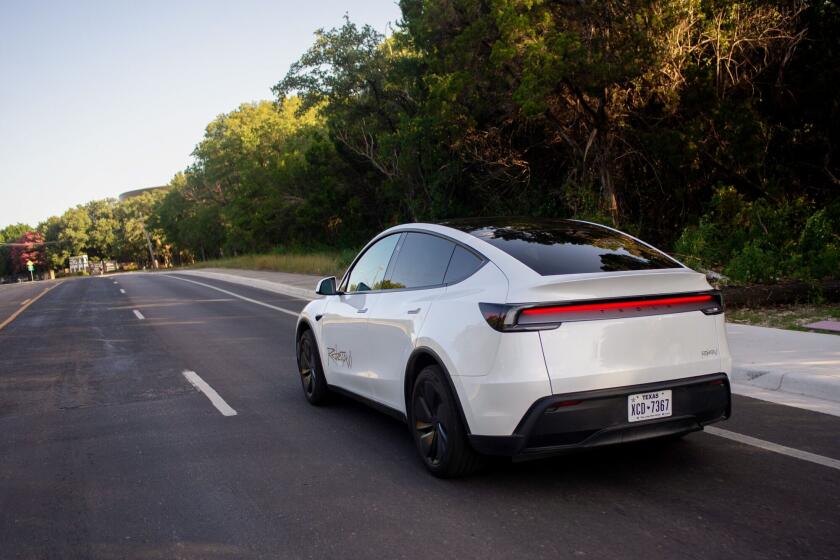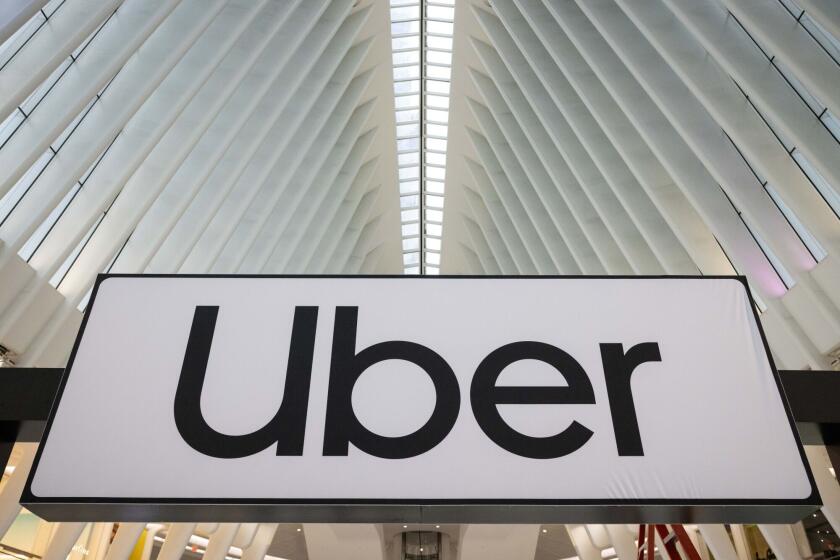Navigating L.A. Via Your Own Inner Map
- Share via
Three women are stopped on a downtown street. Together they have worked in this area for more than 30 years. They are asked by a man who speaks little English how to get to Beverly Boulevard. For a moment, they look at each other blankly. Get on 2nd, one of them says finally, pointing to 2nd Street, and just take it until it splits, bear left onto Beverly. Through the tunnel, another one adds, right? Second becomes Beverly, says the third. Where? Past that puppet theater, says the first. Under that overpass, you know, that isn’t a freeway.
The man, meanwhile, elderly and lost in a city not his own, watches the women. Second, he says, and then straight?
Right, the women say, like a trio of Bud Abbotts. Quickly, they correct themselves. Straight, yes, yes, straight.
A man makes an appointment to meet a friend at a restaurant. He has visited the place frequently but always from his home; this time he will be coming from his office. He does not know how to get to the restaurant from his office, so he drives home first and takes it from there. It adds about 15 miles to his trip and seems to him a perfectly reasonable thing to do.
A woman is asked directions to the freeway ramp she uses every day. As she opens her mouth to speak, she realizes that her route has become in her mind something like a dream, impossible to describe. Cross streets, the number of stoplights, even the roads she traverses are a blur. Unwilling to admit this, she pretends she is leaving at the same time, and simply leads her friend to the ramp.
In Los Angeles, many things are relative but none more so than geography. Places--neighborhoods, cities, mountain ranges--are not defined by where they are but by how one gets to them. We are guided neither by star nor compass but by freeway; we count exit signs and stoplights, measure trips by time rather than miles.
And because each of us follows a different route, there is a sense of fluidity to even the most immovable object. Eagle Rock seems to be in one location when approached from Glendale, in another when driving from downtown. Only the ocean is where you left it.
Over time, every Angeleno develops an internal geography that bears little resemblance to cartographic reality. This city, like God, is vast and unknowable, and must be broken into pieces to be digested, to be understood. And there are many different forms of faith.
Many find strength in community, trusting that there will always be someone to give them directions--friends, family, the guy at Ikea. Others swear by the digital prophets--their front seats littered by printouts from Mapquest, Yahoo, Randmcnally.
But most eventually turn to the holy book, the Thomas Guide, which renders the metropolis both negotiable and unrecognizable. Even if one consults the overview map in the front (and most folks just take their destinations straight back to the index), most Guide time is spent leafing through disembodied hunks of the city in an effort to follow a street, or to backtrack from destination to starting point. This one-cross-street-at-a-time principle tends to soothe the panicking driver, and it also makes it unnecessary to actually know where things are. Where is La Crescenta in relation to Pasadena? City of Industry to downtown? Is North Hollywood really north of Hollywood? How far north? Does it really matter if you know how to get there?
When people complain that Los Angeles lacks a center, they are missing the point. Of course it has a center, a center that shifts and slides with the actions of its people, with events of the world. Confined grids of more traditional cities are easier to commit to memory but less conducive to imagination.
Los Angeles occurred in part because people here could not make up their minds--desert or beach, hillside or valley, pueblo or rancho--and finally decided that they really didn’t want to. The maps of the world are notoriously inaccurate, almost impossible to perfect. The map of the mind, and the heart, is beyond all that.







